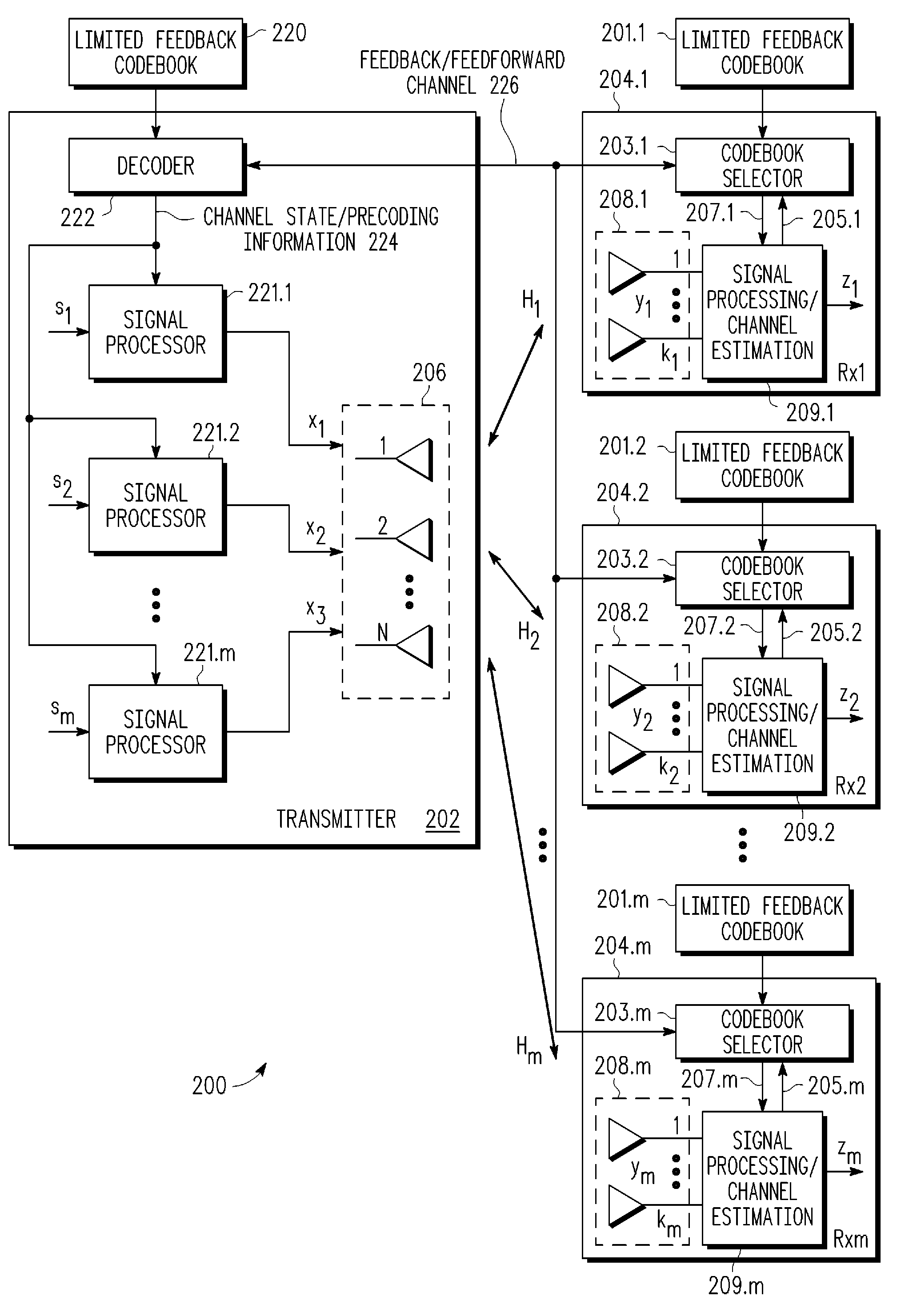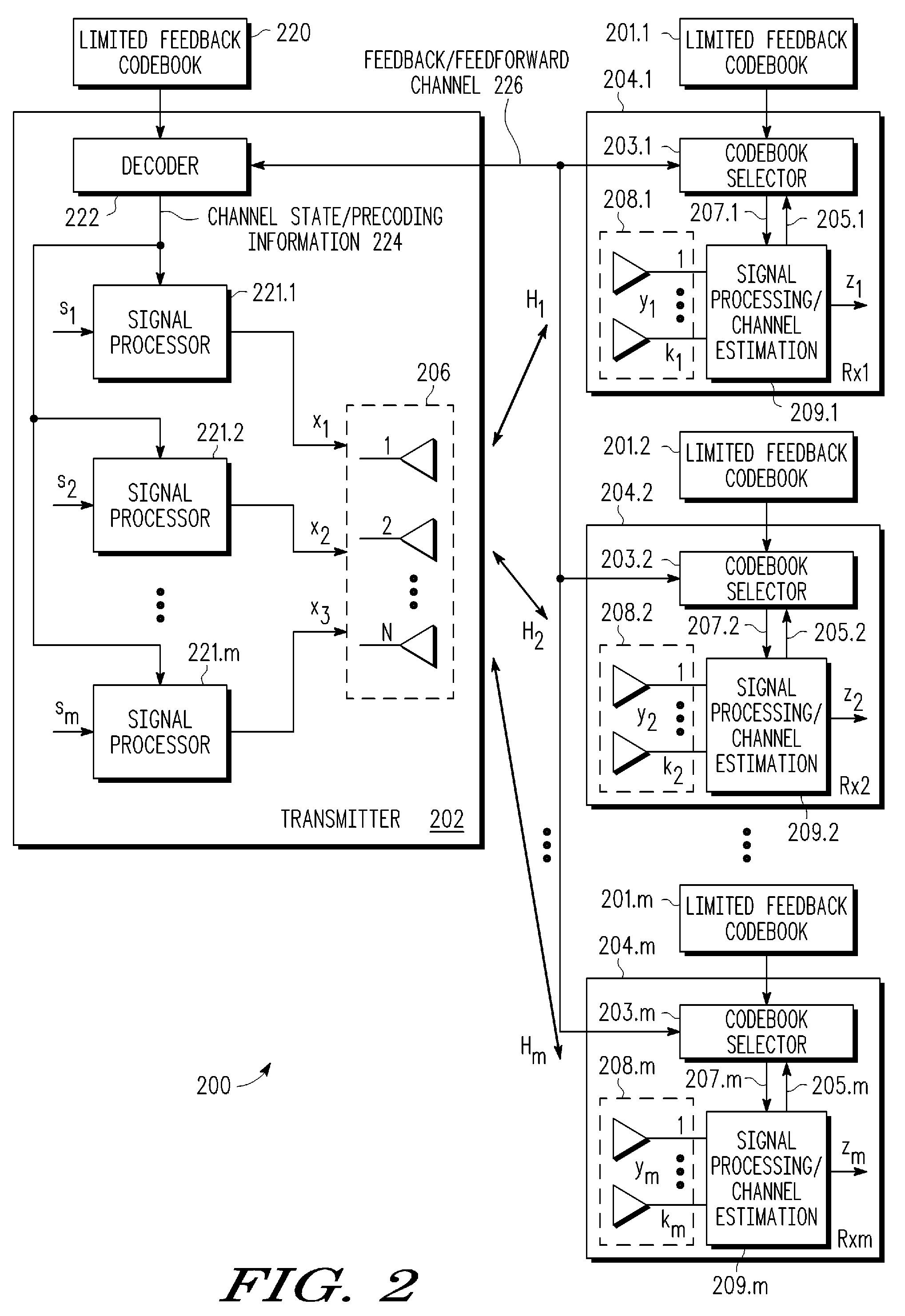MIMO precoding enabling spatial multiplexing, power allocation and adaptive modulation and coding
a technology of spatial multiplexing and precoding feedback, applied in the field of information processing, can solve the problems of increasing the challenge of improving spectrum usage efficiency, precoding feedback can introduce delay, and the capacity of electromagnetic frequency spectrum is limited
- Summary
- Abstract
- Description
- Claims
- Application Information
AI Technical Summary
Benefits of technology
Problems solved by technology
Method used
Image
Examples
Embodiment Construction
[0018]A feedback control system and methodology are described for use in efficiently providing precoder feedback in wireless multi-input, multiple output (MIMO) systems. Using codebook-based precoding techniques, multi-stream transmission is enabled so that each stream is optimized with suitable precoding techniques, transmission power allocation and adaptive modulation and coding (AMC). In various example embodiments, a precoder matrix P is implemented with the matrix P=WD, where W is a unitary matrix coming from a pre-specified codebook, and D is a diagonal power allocation matrix referring to powers allocated to the streams. By choosing the per-stream powers in the non-unitary matrix D from a predetermined set of quantized values, the spectral efficiency of the link may be optimized based on the set of available AMC curves / profiles, and the precoding feedback can be provided with a smaller feedback to switch between beamforming and spatial multiplexing. For example, in the case o...
PUM
 Login to View More
Login to View More Abstract
Description
Claims
Application Information
 Login to View More
Login to View More - R&D
- Intellectual Property
- Life Sciences
- Materials
- Tech Scout
- Unparalleled Data Quality
- Higher Quality Content
- 60% Fewer Hallucinations
Browse by: Latest US Patents, China's latest patents, Technical Efficacy Thesaurus, Application Domain, Technology Topic, Popular Technical Reports.
© 2025 PatSnap. All rights reserved.Legal|Privacy policy|Modern Slavery Act Transparency Statement|Sitemap|About US| Contact US: help@patsnap.com



